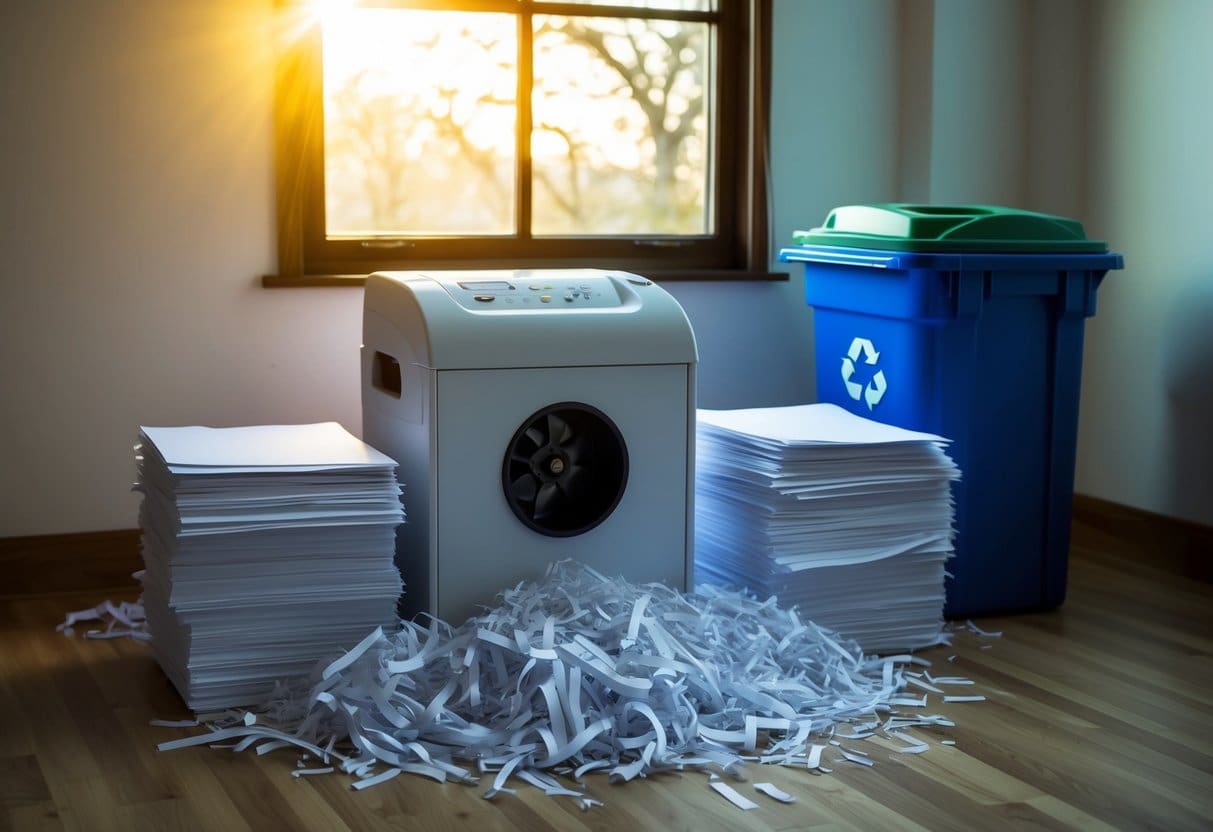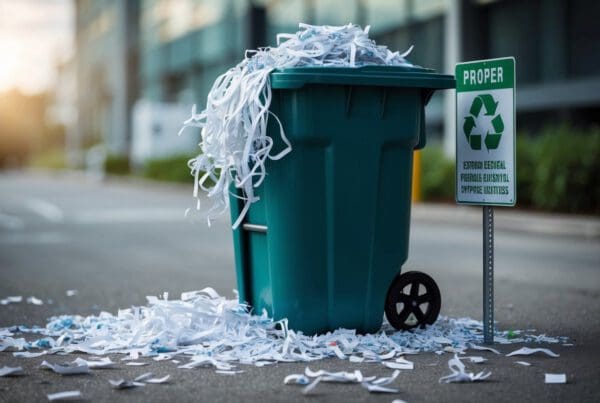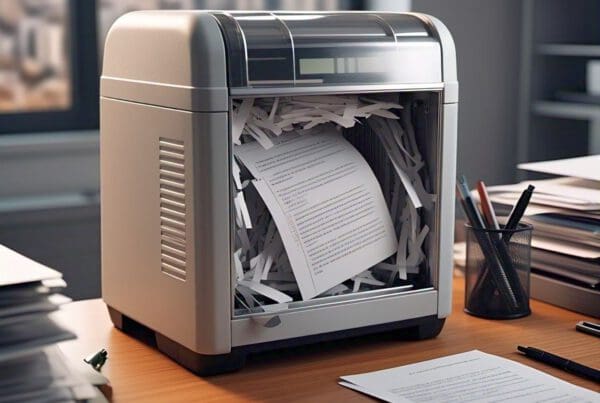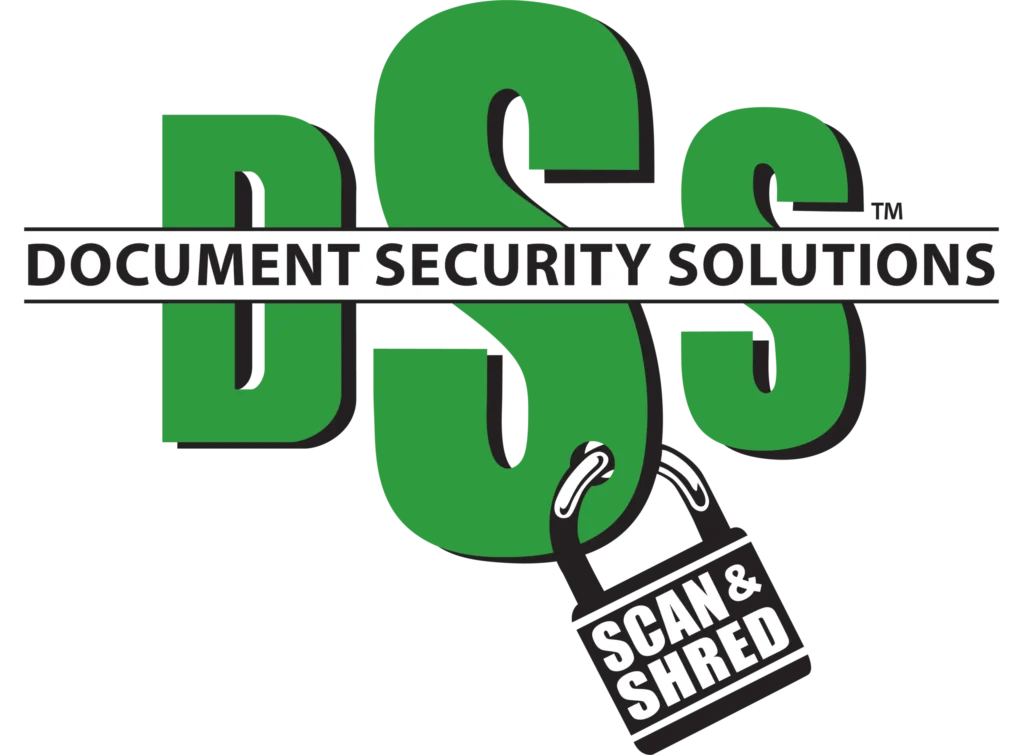Understanding Paper Shredding and Recycling
In our examination of paper shredding and recycling, we discuss how shredding helps ensure security and contributes to the recycling process. We also explore how recycling practices have changed over time to improve our environmental impact.
The Basics of Paper Shredding
Shredding paper is an effective way to protect sensitive information. Paper shredders break documents into tiny pieces, making it difficult to reconstruct them. This is crucial for businesses and individuals who handle confidential documents.
Shredded paper comes in various sizes depending on the machine used. Some paper shredding machines cut paper into strips, while others produce smaller particles. This process not only secures documents but prepares them for recycling.
After shredding, paper can be recycled efficiently. Shredded paper is easier to process because it’s already broken down. When recycled, it helps reduce our carbon footprint and saves natural resources.
Evolution of Paper Recycling
Recycling has transformed significantly over the years. Initially, the recycling process was limited, but advancements have made it more effective. Today, recycled paper comes from various sources including office waste and printed news.
We have developed better technologies that sort and clean shredded paper efficiently. This ensures higher quality recycled materials. Moreover, recycling prevents deforestation by reducing the need for new paper.
Modern recycling is crucial for the environment. It also helps reduce landfill waste and decreases greenhouse gas emissions. By improving recycling methods, we ensure a sustainable future.
Environmental Benefits of Shredding Paper

By shredding paper, we significantly cut down on landfill waste. This eco-friendly practice also plays a role in lowering greenhouse gas emissions. Furthermore, shredding aids in energy savings by boosting recycling efforts.
Reduction of Landfill Waste
When we shred paper, it becomes easier to recycle. This process helps keep paper waste out of landfills, which is crucial for reducing our carbon footprint. With less paper in landfills, the production of harmful emissions is minimized.
Landfills are significant contributors to environmental issues. Paper takes time to decompose, releasing methane gas, a potent greenhouse gas. By reducing paper waste in landfills, we can help combat climate change.
Shredding makes paper recycling more efficient. The small pieces are simpler to process, allowing recycling plants to handle them better. This increased recycling means less paper waste overall, cutting down landfill waste significantly.
Greenhouse Gas Emissions
Shredding paper plays an important role in reducing greenhouse gas emissions. When paper decomposes in a landfill, it emits methane. Recycling shredded paper can lower these emissions.
We need to recognize that decreasing methane emissions benefits the environment. Methane has a greater climate change impact compared to carbon dioxide. Reducing these emissions is a crucial part of any environmental strategy.
Efficient recycling processes from shredded paper reduce the need to produce new paper products. This results in fewer greenhouse gases released during manufacturing. Our actions in paper shredding directly support these emission reduction efforts.
Energy Savings Through Recycling
Shredding paper before recycling leads to significant energy savings. Our efforts to shred help make the recycling process more energy-efficient.
When paper is shredded, it requires less processing at recycling plants. This reduced energy consumption helps decrease the overall environmental impact. Energy savings via efficient recycling can make a substantial difference.
Moreover, recycling shredded paper conserves natural resources. It also lessens the need for new paper production, which can be resource-intensive. By shredding paper, we encourage a cycle of energy efficiency and conservation.
The Role of Paper Shredding in Data Security

We need to highlight how shredding protects information and supports legal obligations. Paper shredding safeguards sensitive data from unauthorized access, reducing risks related to fraud and mismanagement.
Preventing Data Breach and Identity Theft
Organizations face daily threats of data breaches that can severely impact reputation and finances. By shredding documents that contain personal information, we effectively lower these risks. Identity theft is on the rise, and discarding such information carelessly can lead to serious consequences.
Implementing a robust document shredding policy ensures that sensitive data doesn’t end up in the wrong hands. Shredding paper destroys the potential for misusing information before it becomes a threat.
Legal Aspects of Document Shredding
Complying with legal requirements is crucial in today’s data-driven world. Laws such as the Fair and Accurate Credit Transactions Act (FACTA) dictate how companies should manage and dispose of sensitive data. Our adherence to these regulations not only keeps us safe from legal penalties but also builds trust with stakeholders.
Proper document shredding can help us avoid fines linked to unauthorized data disclosures. It is our responsibility to protect privacy by understanding and following these legal aspects.
Sustainable Practices in the Industry
Our exploration of sustainable practices in the paper shredding industry reveals important steps toward reducing carbon footprints. We focus on adopting eco-friendly manufacturing processes and the industry’s ambitious goals for a carbon-neutral future.
Adoption of Sustainable Manufacturing
In the pulp and paper industry, adopting sustainable practices is crucial. We are seeing a shift towards using recycled materials, which helps conserve resources. Recycling rates are improving as more companies opt for eco-friendly choices.
Our industry partners are investing in energy-efficient machinery and reducing emissions during production. This helps lower greenhouse gases. Using sustainable packaging materials is also a priority. By doing so, we minimize our environmental footprint and show our commitment to a sustainable future.
Recycling centers play a key role here. They boost recycling rates and encourage the circular economy model. We support these efforts, reinforcing our dedication to sustainability goals.
Goals for a Carbon-Neutral Future
Working towards a carbon-neutral future is at the forefront of our industry’s goals. We focus on reducing emissions and optimizing our operations. To achieve carbon neutrality, we assess each step, from sourcing raw materials to final production.
We aim to use cleaner energy sources. Renewables, like wind and solar, are becoming more integral in our processes. By investing in these, we aim to cut down our reliance on fossil fuels.
Setting achievable milestones helps us track our progress. As we move forward, we stay committed to these sustainability goals. With constant improvements, we strive to lead the way in reducing our overall carbon footprint.
Innovations and Future Directions
In the quest to reduce carbon footprints, paper shredding technologies have seen significant enhancements. These include improved shredders and eco-friendly disposal methods that enhance recycling.
Advances in Shredding Technology
We’ve seen exciting advancements in shredding technology that efficiently handle waste paper. Modern shredders are faster and more energy-efficient, supporting the recycling process by making paper waste easier to process. Companies are using innovative features, like cross-cutting and micro-cutting, to optimize shredding.
Incorporating mechanical pulping within shredding technology has also improved the integration with paper mills and kraft pulp production. This process helps maximize recycling output and minimizes energy consumption. Many shredding services now emphasize eco-friendly operations, reducing the impact on the environment.
Promoting Eco-Friendly Disposal
Adopting eco-friendly disposal methods is crucial as we strive to meet growing paper demand while minimizing waste. Enhanced recycling methods now play an important role in this effort. By focusing on higher recycling rates, we reduce the need for raw materials and support sustainable practices.
Creative commons and open access principles encourage data availability regarding eco-friendly practices, helping industries improve. With rising awareness, we can work together to ensure waste paper is processed responsibly. Engaging with these communities also provides insights into best practices for the future of paper shredding and disposal.





